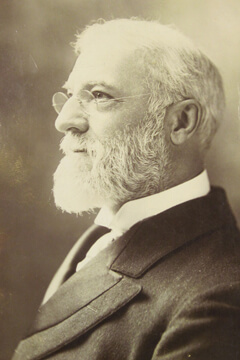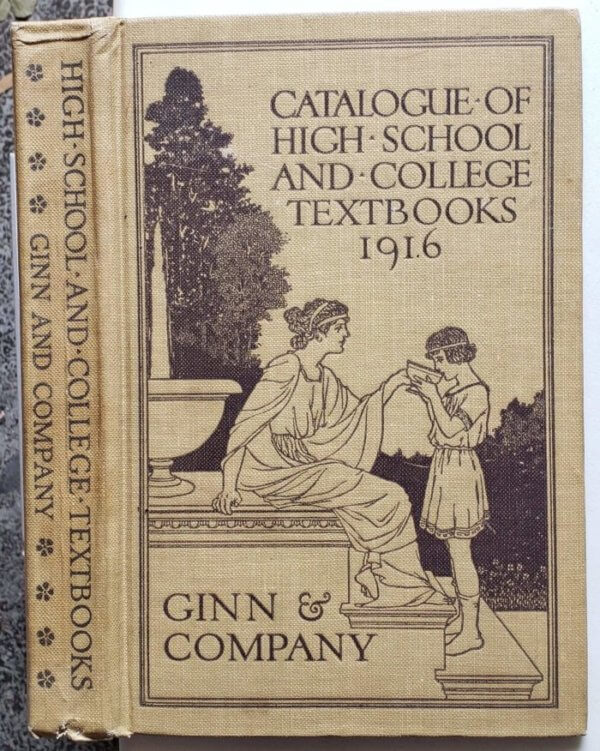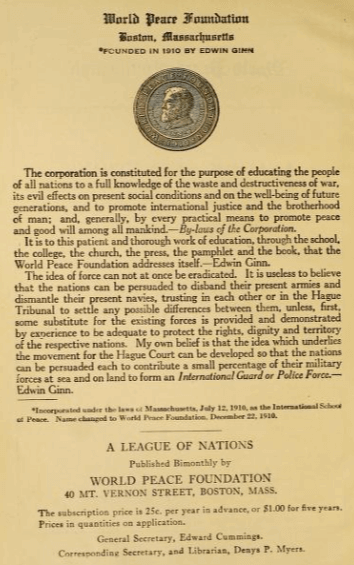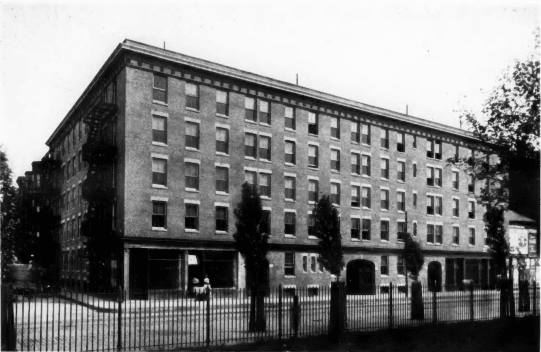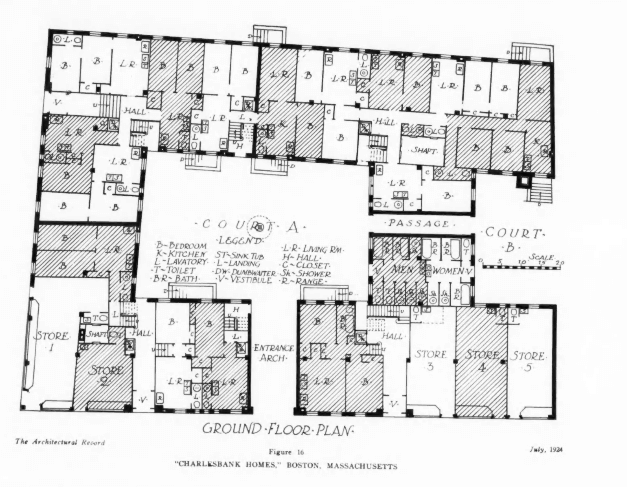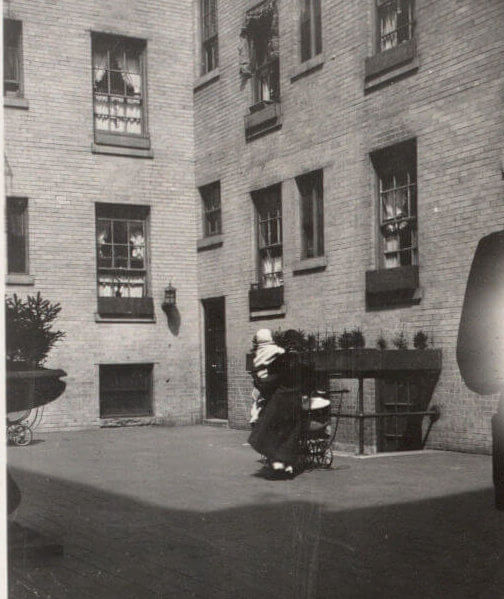Edward Ginn and the Charlesbank Homes
Publishing magnate Edwin Ginn put his wealth and energies to use by establishing the World Peace Foundation and constructing housing for 500 residents at the Charlesbank Homes in the West End.
Edwin Ginn was born into a Universalist farming family in Orland, Maine on February 14, 1838. He attended a Universalist preparatory school before enrolling at Tufts University in 1858, where he graduated with both Bachelors and Masters degrees of Arts. After college, he worked as a traveling schoolbook salesman to pay off his student debt; a job at which he was so successful, he decided to create his own textbook business. Through the Ginn & Co. and Athenaeum Press, Ginn changed the approach of textbook publishing in the United States, and eventually created one of the country’s leading textbook suppliers.
Ginn earned considerable wealth and respect as a Boston businessman and a national corporate leader. The Massachusetts educated class held Ginn in high regard which allowed him to cultivate friendships with Boston’s leading preachers and social reformers. Ginn’s liberal Universalist upbringing and seminary education influenced his sense of public duty, and he became increasingly involved in philanthropy and social and civic affairs. As he grew older, he turned his philanthropic energies toward the achievement of world peace and addressing the housing needs of low income families.
In 1903, when he was 65, Ginn began printing books and pamphlets by peace advocates, including Immanuel Kant, Leo Tolstoy, and Baroness Bertha von Suttner (inspiration for and winner of the Nobel Peace Prize). He believed that if schools, the press, and enlightened leaders could better inform the public of the senselessness of war, people would adopt his notion that world peace was attainable. In 1910, along with Andrew Carnegie and President William Howard Taft, Ginn created the International School of Peace, an assembly of nations meant to legislate on behalf of the world. This organization evolved into the World Peace Foundation which continues to function today at Tufts University.
Between 1820 and 1910, Boston’s population grew from 43,000 to 671,000, and density rates in neighborhoods like the North and West Ends soared to upwards of 190 people per acre. Ginn understood that working families had no choice but to crowd together into tenements, many of which were in poor condition and potentially unhealthy. In response, Ginn purchased a lot in 1910 of approximately 13,550 square feet at the southeast corner of Charles and Poplar Streets overlooking the Charles River. On the land Ginn planned to build a model tenement with fair rents. As Ginn said, “ I consider the proper housing of the people, and by this means giving the impetus to a better life, one of the greatest benevolences of the day.”
Ginn hired architect Ernest Flagg (an experienced designer of several fireproof tenements in Manhattan) to create a fireproof, five-story steel structure, containing 108 units of two-, three-, and four-room apartments for approximately 500 people. It had an interior courtyard for fresh air, views of the Charles River, and sat across from a playground designed by Frederick Law Olmsted. Ginn named the project Charlesbank Homes, and later established a charitable institution of the same name. After construction, the Boston Globe reported that the apartments were “equipped with all modern improvements including gas ranges, steam heat, and sanitary bath arrangements.” Ginn reflected at the building’s dedication on July of 1912:
While we shall aim to look after the comfort and health of our tenants, it is in our purpose to make this building aid in the solution of the race problem. All nationalities are to be admitted, and any tenant of one race who causes trouble with those of any other will be asked to vacate. No person addicted to strong drink will be allowed in the building.
Using the term “race” as we would use “ethnicity” today, Ginn spoke to the rapid influx of Eastern European, Italian, and other groups into Boston, and the potential conflict between these new immigrants and the established population. A 1924 article in the The Architectural Record described the demographics of the Charlesbank Homes:
The fact that the building stands in a neighborhood now largely Jewish, accounts for the greater part of the tenants being of that faith. Other nationalities are Italian, Irish, Swedish, Scotch, English and American. It is considered that 60 percent of Jewish occupants would be the desirable maximum.
Media mogul Sumner Redstone and his family, the Rothsteins, were among the building’s occupants at this time.
The Charlesbank Homes were considered such a success that advocates of public housing suggested clearing large swaths of the West End for similar units, long before the Boston Housing Authority initiated its plans for the neighborhood in the 1950’s. Edward Ginn died on January 21, 1914, at his home in Winchester, leaving through his will one million dollars to the cause of international peace. Tufts University named a library after him at its Fletcher School of Law and Diplomacy. Fortunately, Ginn did not live to see his Charlesbank Homes demolished to make way for luxury apartments, but his Charlesbank Homes Foundation continues his legacy of promoting and funding affordable housing throughout Massachusetts.
Article by Janelle Smart Fisher, edited by Bob Potenza
Sources: Brown, Frank Chouteau. “The Low Rental Apartment – An Economic Fallacy.” The Architectural Record, July 1924, pp. 65-71.; The Boston Globe – Wed, July 03, 1912, page 15; The Boston Globe – Fri, Feb 27, 1914, page 10; The Boston Globe – Mon, Mar 02, 1914 · page 3; Rotberg, Robert I.. A Leadership for Peace: How Edwin Ginn Tried to Change the World, Redwood City: Stanford University Press, 2007; Tufts University, World Peace Foundation https://sites.tufts.edu/wpf/.


